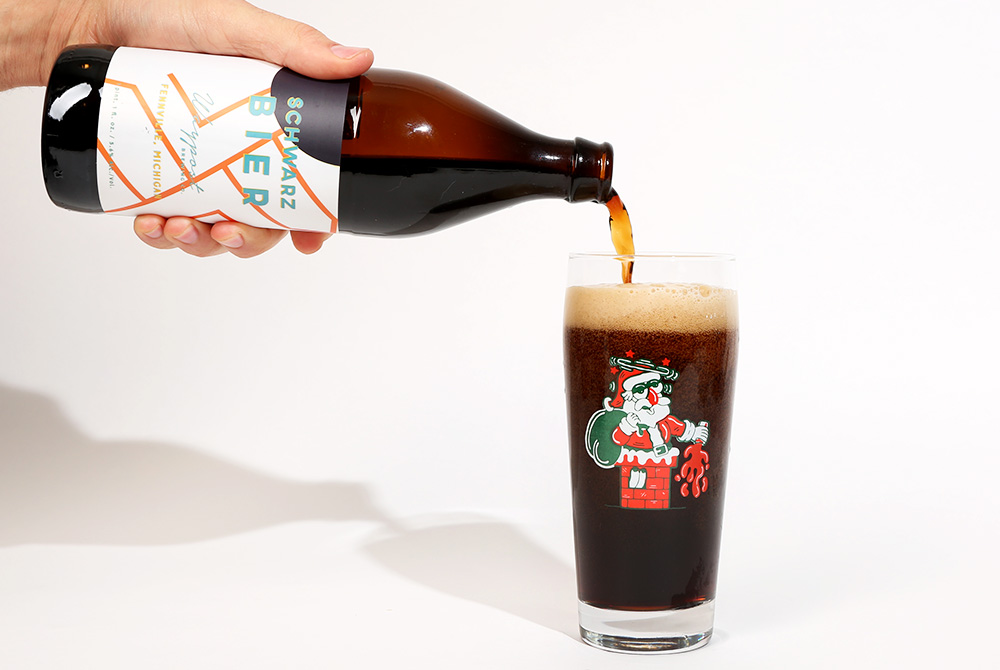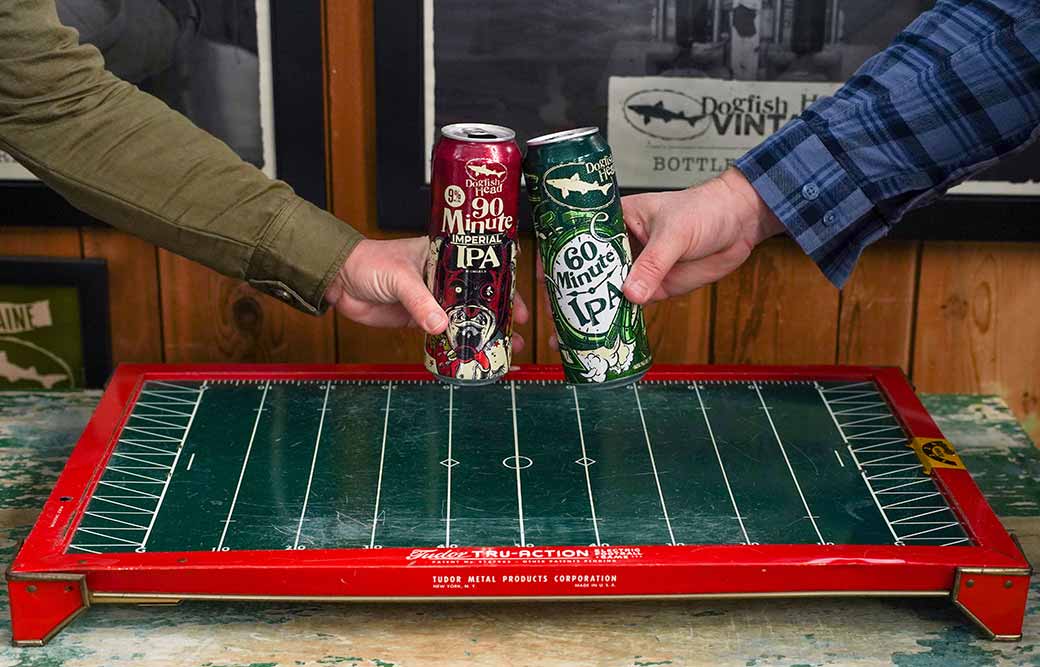Shop
What Is Schwarzbier?
The other black beer.
Looking for More?
May the Schwartz be with you! For those unfamiliar with the iconic Star Wars parody from Mel Brooks called Spaceballs, let me fill you in. It’s a hilarious flick featuring Honey, I Shrunk the Kids’ Rick Moranis as Dark Helmet (aka Darth Vader) in a helmet ten sizes too big for him; John Candy as Barf, a half-man, half-dog sidekick; and a character called Yogurt, the wisest sage in the galaxy. Yogurt wisely says, “May the Schwartz be with you.” Obviously, a parody of “May the Force be with you.” Star Wars fans famously mark May 4th as an official holiday: May the 4th Be With You. So it makes complete sense that craft beer fans have morphed that day into our own parody: May the Schwartz Be With You. Instead of celebrating Star Wars (you still can, if you want), the craft beer version celebrates schwarzbier.
What?
Schwarzbier! Literally, a German word that translates to black lager, schwarzbier is reminiscent of a German-style dunkel but drier, darker, roastier, and lighter.
It’s a style with a rich history in Germany that only recently started to pop up in the United States.
But if American craft brewers have anything to say about it, schwarzbiers are a style that one should drink not just on May 4th but any time during the year.
“I love schwarzbiers; they’re amazing,” says Lauren Hughes, former head brewer at Necromancer Brewing*, who used to make a version called Night Light, and current head brewer at Two Frays in Pittsburgh, PA. “I can knock them back anytime. It’s crisp enough to drink in the summer, and when winter comes, it’s a rock.”
Hughes first experienced a schwarzbier in college. While drinking one at Upland Brewing Co. in Bloomington, IN, she remembers thinking: “What the fuck is this? This is great; this is all I want to drink for the rest of my life.”
If Hughes had her way, she’d brew schwarzbier as often as possible. And it seems many agree.
*Editor’s Note: Since initially publishing this story in 2022, Necromancer has closed.
The Origin of the Schwarbier

Photography courtesy of Bitburger International
Schwarzbier originated in the regions of Saxony and Thuringia in Germany during the Roman Empire. At the time, farmers often cultivated grains such as barley, wheat, oats, and rye, which were perfect for beer. While wine was the drink of choice for Romans, because Saxony and Thuringia were located pretty far north and east from Roman influence, people were allowed to brew pretty much whatever they wanted.
“Beer was seen as a lower beverage, the drink of the people,” says Adam Lukey, head brewer at Eventide Brewing in Atlanta, GA, who brews a schwarzbier called Midnight Hour. “Kings drank wine, but the people drank beer because it was liquid bread, whereas Ambrosia was the drink of the gods.” Because Thuringia and Saxony were outside the influence of Romans, brewers were free to do whatever they wanted. “That gave birth to the schwarzbier,” says Lukey.
But that’s not to say that brewing schwarzbier didn’t follow strict purity rules. In 1516, the Reinheitsgebot stated that beer in the Bavaria region of Germany could only contain four ingredients: water, hops, malt, and yeast. Technically, Saxony and Thuringia weren’t in Bavaria, so they developed their own provincial purity laws called Vorläufiges Biergesetz.
“That said, schwarzbier had to be 100 percent malted barley with no adjunct grains,” says Lukey.
These medieval beers used kilned malts often categorized as schwarz (black), braun (brown), or rot (red).
Hence, schwarzbiers are literally considered black lagers; the dark grain gave this beer style its color and its roasty, dry qualities.
In Germany, Köstritzer is the most famous brewery that brews schwarzbier. Located in Bad Köstrizt, the brewery started making schwarzbier in 1543, leveraging the town’s mineral-rich water. Considered a spa town, people would flock to Bad Köstritz to “come to the spa and drink schwarzbier to make you strong and healthy,” says Lukey.
Fast-forward a few centuries to 1949, when Germany split into two independent nations: West Germany (the Federal Republic of Germany) and East Germany (the German Democratic Republic). During this period, schwarzbier almost died out when brewers added adjuncts outside the Reinheitsgebot and the provincial beer laws to recipes.
For example, in 1989, one year before reunification, Köstritzer (the original brewers of the style) brewed only ten bbls of schwarzbier. “That’s like saying only eight black wild rhinos are left,” says Lukey. “It was that close to extinction.”
Luckily, with German reunification came a resurgence of schwarzbier in Europe. Eventually, the black lager made its way over to the States, where it’s now experiencing a renaissance amongst modern American craft brewers.
What Makes a Schwarzbier so Black?
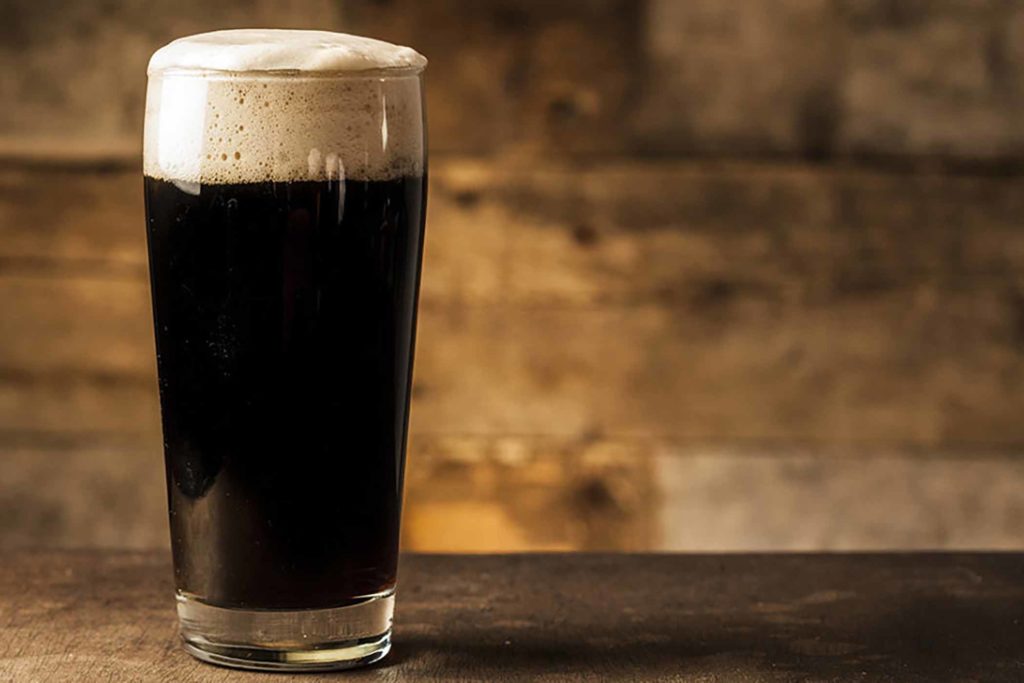
Photography courtesy of The Electric Brewery
As we mentioned, schwarzbier translates to black beer.
It’s the roasted malts that create that dark color in a schwarzbier.
Lukey points out that most of the base grains are Pilsner and Munich malt.
“Pilsner malt is the workhorse of the grist, adding upwards of seventy percent of those fermentable sugars,” says Lukey. “The Munich … lends a slight complexity to the mash.”
In Eventide’s schwarzbier, Midnight Hour, Lukey uses dark Munich malt, roasted black barley, and a touch of chocolate wheat, which “gives the beer a softer and slightly sweet taste on the palate,” says Lukey.
Likewise, when Hughes used to brew Night Light, she included a blend of malts—Pils, Munich, and black malt. But what’s most important to her is that the malts come directly from Germany. Hughes used Weyermann malts because they’re a great maltster with the highest-quality product.
Another trick with the malt in a schwarzbier? “You don’t want to extract bitterness,” says Lukey. “You want that roastiness balanced with the maltiness of the beer.” For that reason, Lukey says many brewers use dehusked or debittered roasted malts to reduce the amount of bitterness.
Do Hops Play a Role in Schwarzbier?
Of course they do! It’s just not a starring role. The hops are more of a Chewbacca than a Luke Skywalker, if you get our drift. They’re there as a supporting character.
But the type of hops is important. “With schwarzbiers, you want to use traditional noble hops,” says Lukey, who deploys German Tettnang in Midnight Hour. But any German noble hop variety will do here. For example, Tettnang, Hallertau Mittelfrüh, or Saaz all work well in schwarzbiers.
“The big thing is the aroma and the taste,” says Lukey. “Instead of American hops, where you’re talking about huge tropical, stone fruit notes, these are very earthy, woody, herbal, slightly spice hops.”
All help accentuate and balance the maltiness and roastiness.
“Hops are important, but not like in IPAs,” says Hughes. “You want that floral, earthy taste from the hops, but the biggest thing is to balance and help zip up the beer.”
Take Us Through a Tasting of Schwarzbier

Photography courtesy of Eventide Brewing
Pouring out a schwarzbier, you should find a beer somewhere between a dark brown and ruby garnet to a jet black.
However, for some brewers, black is the only way to go. “The word literally translates to black beer … so if you call something a black beer, to me, it has to be black,” says Hughes. Accordingly, Night Light pours out pitch black.
On the tasting, you’ll get a full blast of malt. “Not so bready, but there is a sweetness to it,” says Lukey, explicitly referring to Midnight Hour. “The roast comes out immediately, and you get that chocolate coffee, but not bitter at all.”
Hughes likes to note a tiny bit of roast, dark caramel, and breadiness in schwarzbiers, but “still something really clean and easy to drink.”
Of course, the characteristic dry finish of a schwarzbier is very important, preparing you to want another sip immediately.
Some might call it addictive even.
Schwarzbiers Are Dark, But They’re NOT Stouts. Yet They’re Damn Delicious
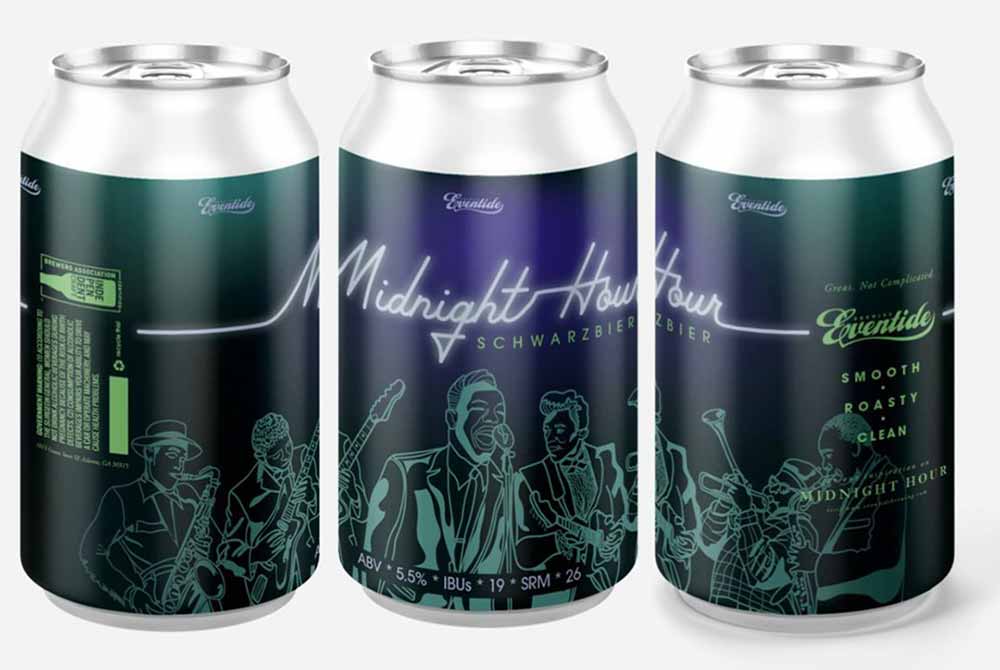
Photography courtesy of Eventide Brewing
If you remember anything from this article, it should be this: Schwarzbiers are dark lagers; they are NOT stouts.
“Some people think that schwarzbiers are the stout of Germany, but I would argue it’s not,” says Hughes. “It’s still a lager, so it should still have that really crisp base malt and be something zippy, but with a tiny bit of roast to make you feel like you’re drinking a dark beer.”
And this is one of the best parts of a schwarzbier.
Whereas stouts can be heavy, schwarzbiers are light.
Whereas imperial stouts can reach upwards of 9% ABV, schwarzbiers typically fall between 5-6% ABV, making them ideal for one or two.
And whereas adjunct stouts can have many cloying sweet notes, schwarzbiers are simply malty, roasty, clean, and dry.
They’re dark lagers. And that’s a good thing.
To put schwarzbiers in the same category as a stout would be like saying Star Wars and Star Trek are the same.
Sure, they’re both movies about space, but they have totally different plots and followers.
Same with schwarzbiers and stouts: They’re two completely different styles of beer that share mainly their color in common.
Remember: Schwarzbiers are lagers.
“What I like to call black beer for the people who say they don’t like black beer,” says Lukey. “Because they expect it to be cloyingly sweet like a Russian imperial stout or really roasty and bitter, but that’s not the case with schwarzbier because it is a lager … and not an ale.”
What Lukey means is that you use a bottom-fermenting yeast with a schwarzbier. This produces a beer that (although black in color) is very crisp, dry, and highly drinkable, making them perfect for any season.
“Drinking a heavy 12% ABV stout on a ninety-degree day out in the sun is not appealing, but with a schwarzbier, you could have a few out and about just because they are so good and invite you to drink more,” says Lukey.
Hughes agrees, “On a fall or spring night when it’s still cold, you can sit by the fire, have a couple, and not feel like you’re drinking a donut.”
Brewing a Good Schwarzbier Makes a Better Brewer
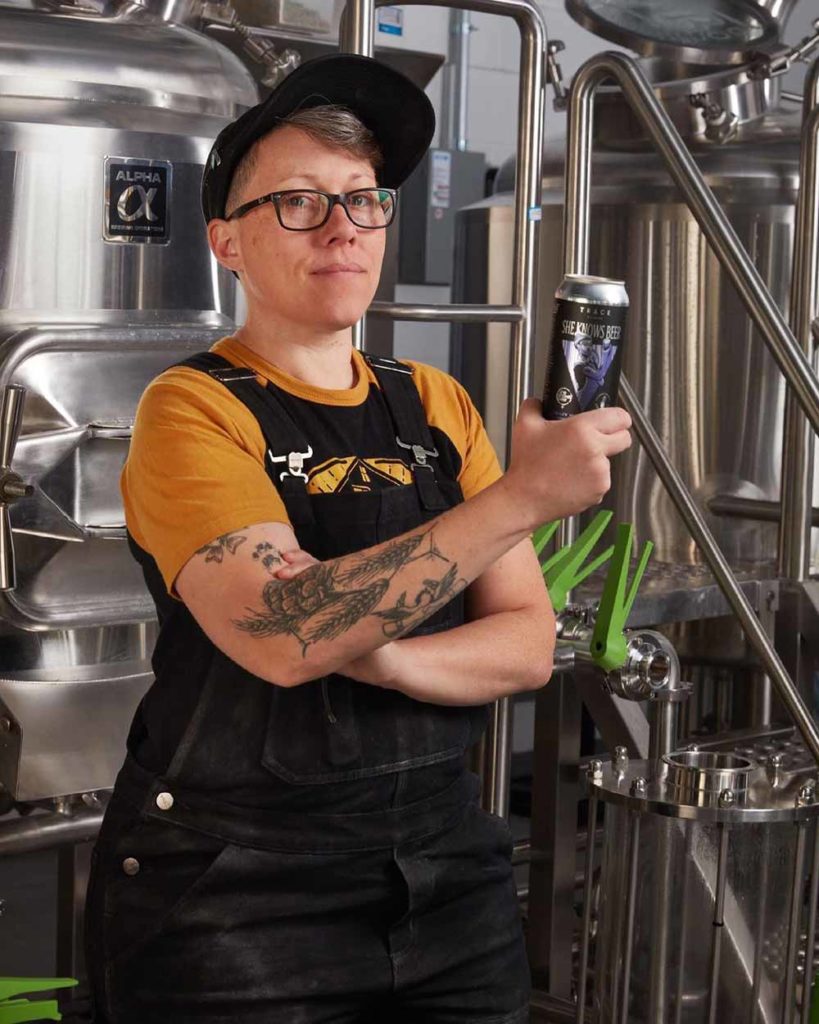
Lauren Hughes, former Head Brewer at Necromancer Brewing | Photography courtesy of Necromancer Brewing
Beyond its great taste, schwarzbier can be extremely tricky to brew.
Fittingly, Lukey believes brewing a good schwarzbier is a true testament to the brewer.
“When you throw a chocolate cake in your mash, you can hide a lot of imperfections behind that mask,” says Lukey. “This beer for a brewer really shows your chops because there is nothing to hide behind.”
Just two or three grains and a hop or two, right?
“You can do crazy over-the-top things, but can you just brew a simple beer?” says Lukey.
Hughes agrees, “With lagers, you can’t hide behind them, which is great because if you make one that kicks ass … sweet, you did it! But if something is wrong with it, people will taste it, and it will shine front and center.”
Additionally, because a schwarzbier is a lager, extra time is required in the tanks. This can be a tricky proposition in a brewhouse where turning tanks more quickly means you brew more beer and have more opportunities to boost your bottom line.
When Hughes brewed a schwarzbier at Necromancer, she fermented for as long as possible, typically eight weeks. “Especially with a dark beer, you have to lager those suckers for a long time to get the flavor right,“ says Hughes. “I’d make them all the time and make them a house beer if I could, but they take up tank space.”
Similarly, Lukey says, “I tell my boss you’re not my boss; the beer is the boss because it tells me when it’s ready.”
For some brewers, that can look like dollar signs going down the drain, but for Lukey and Hughes, the extra time, attention, and tank space is worth it.
May the Schwartz Be With You
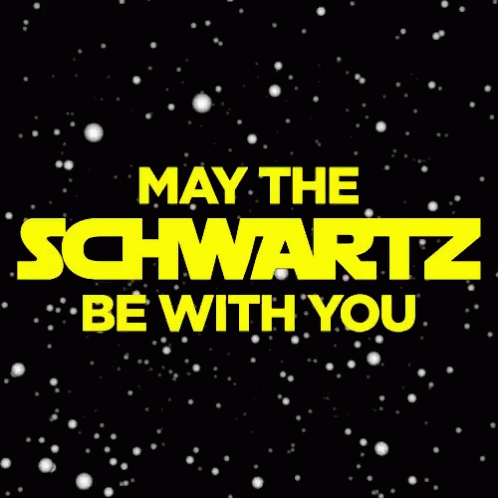
In reality, schwarzbiers have nothing to do with Star Wars. It’s just a dark beer with a name that matches a funny quote from the Star Wars parody Spaceballs.
We could get deep here and say that its depths take us to galaxies far, far away, but we won’t.
We’ll just say: Although nowhere near as popular as American IPAs, schwarzbiers deserve a place in the American craft beer iconography.
Lukey says Midnight Hour often meets reluctance initially in Eventide’s taproom. Folks ask: What is that? “But then they try it, and it’s an unexpected surprise,” says Lukey. “People want to go into crazy quad hazies with high density, high charge, Phantasm and Incognito, but there is something elegant in the simplicity of the style.”
Hughes notes she doesn’t see the popularity of hazies going anywhere, “but I do see a shift for a lot of consumers who want something different. They don’t want to go to a taproom and see a bunch of IPAs. They want to see two or three and have options for when they’re tired of drinking them.”
A schwarzbier is perfect for rotating into the taplist. “If you have a stout, it’s too heavy,” says Hughes. “A schwarzbier can be something dark but still light that they can latch onto and not feel overwhelmed by an adjunct or big imperial bomb.”
Hughes continues. “[A schwarzbier] is a crusher that’s a dark beer for people who don’t want to have stouts or are tired of drinking IPAs and want to drink something that’s a totally different experience on the palette.”
The Best Schwarzbiers to Try Right Now
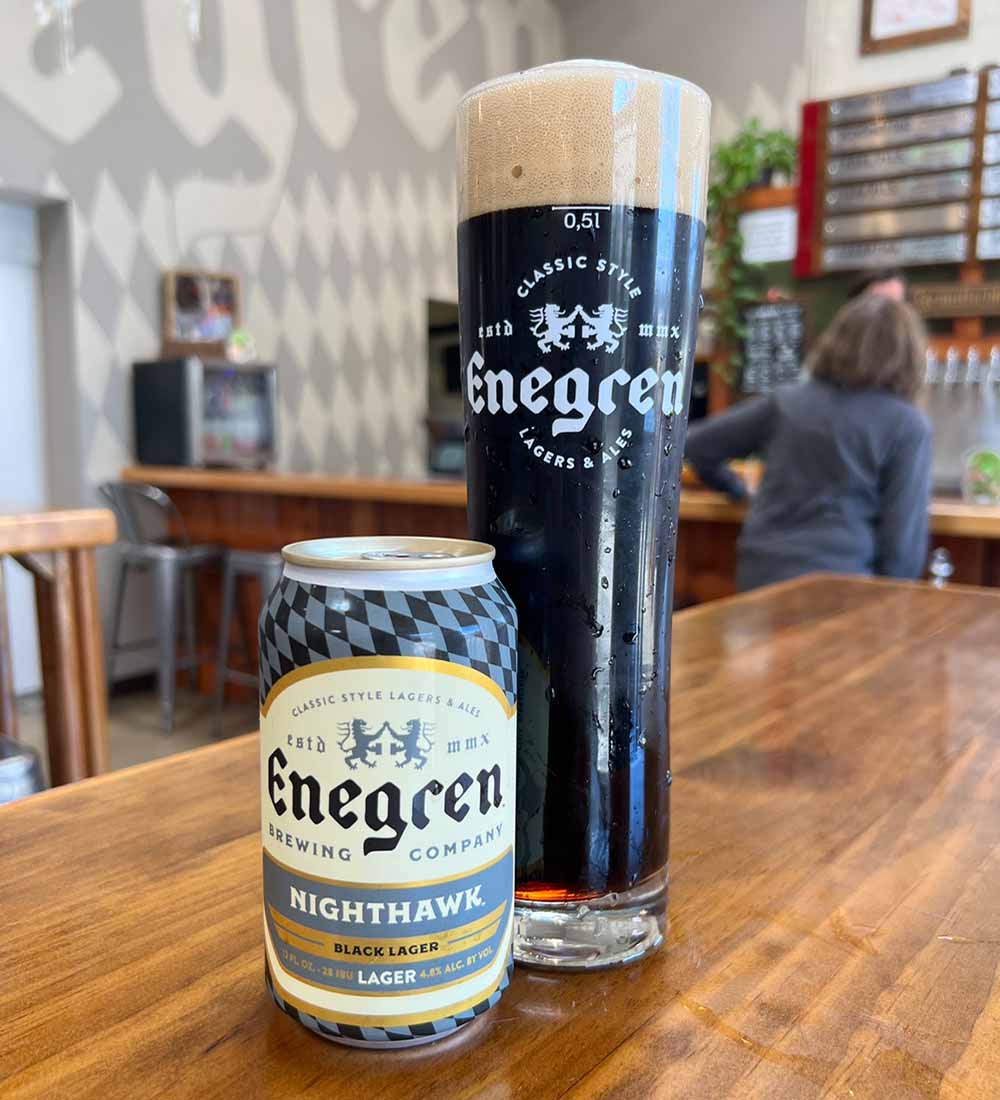
Photography courtesy of Enegren Brewing Company
Midnight Hour – Eventide Brewing
Atlanta, GA
“Immediately, you get a full maltiness, not so bready, but there is a sweetness to it,” says Lukey. “The roast comes out immediately after, and you do get that chocolate coffee note, but not bitter at all.” Midnight Hour hits just 5.5% ABV, so it’s a clean, crisp black lager that you can have one, two, or maybe even three of on a hot summer afternoon or a cold winter night.
Nighthawk – Enegren Brewing Company
Moorpark, CA
Landing at only 4.8% ABV, Nighthawk has a super light body and a great lighter coffee flavor. Named after the term Chris and his brother used to have for when they’d stay up all night brewing (“Operation Nighthawk”), this schwarzbier is genuinely a beer you could drink a few of late into the night and still feel fine the following day.
“This beer is refreshing, dark, and good on a hot day,” says Chris. “Once people try it and [understand] it’s not going to taste like Guinness or a thick roasted stout, then they see that dark lager, especially German dark lager, is designed for drinkability, and that’s a great thing!”
For transparency, Chris and John did send us some Nighthawk to try ourselves. It’s incredible: smooth, almost velvety, but with a nice snappy chocolatey bite that brings you back around to go in for the next sip. I drank one while writing this piece and found my glass emptier quicker than expected.
Köstritzer Schwarzbier – Köstritzer Schwarzbierbrauerei
Bad Köstritz, Thüringen, Germany
The OG schwarzbier! If you get into this style, you should try the original German version at least once. One of the oldest producers of schwarzbier, Köstritzer, began brewing in the town of Bad Köstritz in 1543. The “spa town” encouraged visitors to drink its black lager to make them stronger and healthier. Most recently, the German brewery joined the Bitburger Brewery Group in 1991, reintroducing the “original Köstritzer black beer” in 1993. But it’s still a historical version that you should absolutely try, preferably in Germany if you can.
When we prophesized this might be the “Year of the Dark Lager,” we spoke to several brewers who called Köstritzer the OG schwarzbier. Although a subsidiary of Bitburger Brauerei, Köstritzer Schwarzbierbrauerei makes an impressive German dark lager.
For example, New York-based brewer Robyn Weise says Köstritzer was the first beer that turned her attention to dark lager. Five or six years ago, while working at the now-closed Prospect Heights Beer Works, she says an older gentleman came in several times asking if they had Köstritzer. Because it came from a “macrobrewery,” they could order it easily for him. “We sat on that case as long as it took this guy to get through a six-pack a week,” she laughs, illustrating the place of dark lager in America at the time. But she still remembers that beer to this day.
Similarly, Schilling Beer Co. Lead Brewer Ryan Murphy says that, although everyone has heard of Guinness, very few know Köstritzer, “even though it’s a huge market volume,” he explains. “Köstritzer is a fantastic schwarzbier, and you may think of it as a large, macro beer in a lot of ways, but it’s also in many ways a style-defining beer because, for almost one hundred percent of consumers, it’s going to be the only schwarzbier that their local craft brewery doesn’t make.”
Rennsteig – Schilling Beer Co.
Littleton, NH
Speaking of Schilling, they make their own version of a schwarzbier that ranks in the top ten of Untappd’s All-Time Top-Rated Schwarzbiers.
Named after a 700-year-old hiking trail in Germany, Rennsteig is probably a beer you could take on a hike. Super crushable, this German dark lager brings mountains of malt depth akin to toasted dark rye crust, dark chocolate, and fresh coffee beans. But, as any excellent schwarzbier, Rennsteig finishes crisp, getting you immediately ready for that next sip—again and again and again.
Dark – The Alchemist
Stowe, VT
From the masters of murky comes a beer on the complete opposite of the spectrum. The Alchemist says Dark falls somewhere between a dunkel and schwarzbier. But for the most part, you can expect all the hallmarks of an excellent German-style dark lager—milk chocolatey, smooth, a touch of roast, and crisp finish, which is probably why this schwarzbier ranks second all-time on Untappd’s top-rated list.
Black Lager – Goldfinger Brewing Company
Downers Grove, IL
“Don’t let the dark color fool you,” writes Goldfinger in the beer’s Untappd description. “Our traditional German-style schwarzbier is deceivingly light, with a subtle malt and roast presence.” Probably thanks to a single decoction mash, which enriches those complex malt flavors. You’ll find a slight hop bitterness in this one, but a velvety body washes everything away, making this 4.6% ABV schwarzbier especially dangerous to drink. A beer you can enjoy all year long, Black Lager hits exceptionally well in the winter when its roasty chocolate notes pair perfectly with a snowy winter.
Schwarzbier – Waypost Brewing Co.
Fennville, MI
Just to show the versatility of this beer, we named Waypost’s Schwarzbier one of our “20 Best Beers to Drink in Winter 2020.” Why? Because it wasn’t oppressively heavy or sickly sweet—a common misconception in America with dark beer.
Brewed with heavily roasted malts, Schwarzbier is midnight black but restrained in flavor. In fact, the light and subtle coffee and chocolate loaf notes made this beer exceedingly drinkable and refreshing. We could easily put back a few bottles of this beer on a wintry night.

